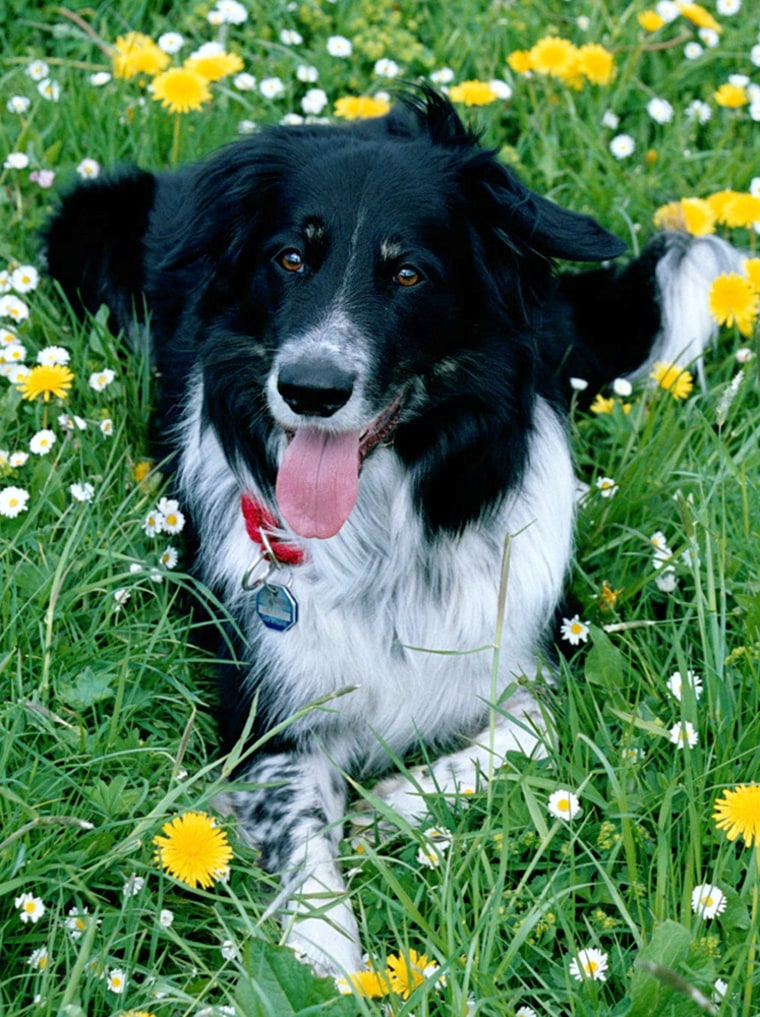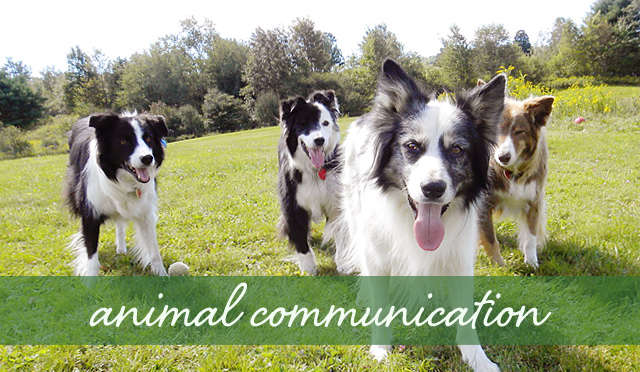Have you ever wondered how your Border Collie communicates with you? It may seem like your furry friend understands everything you say, but do you really understand what they’re trying to tell you? In this article, we’ll delve into the fascinating world of Border Collie communication and explore how these intelligent dogs express themselves. By the end, you’ll have a deeper understanding of your dog’s behaviors and what they’re trying to communicate to you.
Border Collies are known for their incredible intelligence and their ability to understand and respond to commands. But communication goes beyond just following instructions. Your Border Collie communicates with you through their body language, vocalizations, and even their eyes. Understanding these cues is crucial in building a strong bond with your dog and ensuring their well-being. In this article, we’ll explore the different ways your Border Collie communicates and how you can decipher their messages. From tail wagging to barking and eye contact, we’ll cover it all. So, if you want to connect with your Border Collie on a deeper level, keep reading to learn more about how your dog talks to you.

Understanding Border Collie Communication
Importance of communication with your dog
Communication is a vital aspect of any relationship, and this is no different when it comes to the relationship between you and your Border Collie. Effective communication enables you to understand your dog’s needs, emotions, and intentions, ultimately strengthening the bond between you. By understanding how your Border Collie communicates, you can navigate training challenges, address behavioral issues, and provide a fulfilling and enriching life for your furry companion.
How dogs communicate with humans
Dogs have a unique way of communicating with humans, and understanding their methods of communication is key to fostering a strong relationship. While humans primarily rely on verbal communication, dogs rely more on nonverbal cues, body language, and vocalizations to convey their messages.
Specific communication techniques for Border Collies
Border Collies, known for their intelligence and high-energy levels, have their own unique ways of communicating. To effectively communicate with your Border Collie, it is important to understand their specific communication techniques, which involve body language, vocalizations, gestures, and touch. By deciphering these cues, you can not only build a deeper connection with your Border Collie but also address any behavioral or training challenges that may arise.
Body Language Signals in Border Collies
Signs of relaxation and calmness
When your Border Collie is relaxed and calm, their body language will reflect this. Look for a loose and wagging tail, relaxed ears that are neither pinned back nor forward, and a soft, relaxed posture. Your Border Collie may also display a relaxed open mouth and may lay down or sit with a loose body. Understanding these signs of relaxation and calmness will help you recognize when your dog is content and at ease.
Indications of fear and anxiety
Just like humans, dogs can feel fear and anxiety in certain situations. When your Border Collie is experiencing these emotions, their body language will change. Look for signs such as a tucked tail, lowered body posture, ears pinned back, and dilated pupils. Your dog may also exhibit behaviors like panting, excessive drooling, and attempting to escape or hide. Recognizing these signs of fear and anxiety will allow you to provide reassurance and support to your Border Collie in these moments.
Communication through eye contact, tail position, and ear movement
Eye contact, tail position, and ear movement are key components of your Border Collie’s communication. Your dog’s eyes can convey a variety of messages, such as affection, trust, fear, or even a warning. Pay attention to your Border Collie’s gaze and the intensity of their stare.
A Border Collie’s tail position can also serve as an indicator of their mood. A wagging tail held at a mid-level usually signifies happiness and excitement. However, a tucked tail indicates fear or nervousness, while an erect, rigid tail can be a sign of alertness or aggression.
Similarly, ear movement can provide valuable insight into your dog’s emotions. Relaxed ears indicate a calm and contented state, whereas flattened or backward ears may signal fear or anxiety. Raised ears may show alertness or interest. By observing and interpreting these nonverbal cues, you can better understand your Border Collie’s intentions and emotions.

Vocalization and Verbal Communication
Different types of barks and their meanings
Barking is a common form of vocalization used by dogs, including Border Collies, to communicate. It is important to understand the different types of barks and their meanings to effectively communicate with your dog.
- Continuous or rapid barking can indicate excitement or a need for attention.
- A high-pitched bark can signal fear, surprise, or pain.
- A deep, low growl may indicate aggression or a warning.
- A howl can indicate loneliness or an attempt to communicate with other dogs.
By paying attention to the tone, pitch, and context of your Border Collie’s barks, you can decipher their intentions and address their needs accordingly.
Understanding growling and whimpering
Growling and whimpering are two vocalizations commonly used by Border Collies to express themselves. Growling is often associated with aggression or a sign of warning. However, it can also be a means of communication when your dog is frustrated or feeling threatened.
On the other hand, whimpering is typically a softer vocalization that can indicate pain, fear, or a desire for attention. By listening to and understanding these vocal cues, you can effectively respond to your Border Collie’s needs and alleviate any discomfort or anxiety they may be experiencing.
The importance of tone and pitch in verbal cues
In addition to barks, growls, and whimpers, the tone and pitch of your voice play a significant role in your Border Collie’s interpretation of verbal cues. Dogs are highly sensitive to human emotions and can pick up on subtle changes in your voice. Using a calm and gentle tone can help reassure and comfort your Border Collie, while a firm and authoritative tone can convey commands and expectations.
Consistency in your tone and pitch is crucial to avoid confusion. Using positive reinforcement and consistent verbal cues, coupled with an appropriate tone and pitch, can effectively communicate your expectations to your Border Collie.
Understanding Border Collie Gestures
How dogs use their paws to communicate
While often overlooked, a dog’s paws can provide valuable communication clues. Border Collies, like many dogs, may use their paws to express a range of messages. For example, pawing at you may indicate a desire for attention, whereas scratching at the ground can signal frustration or a need to relieve stress.
It is important to pay attention to your Border Collie’s paw movements and respond accordingly. By recognizing and responding to their gestures, you can foster a better understanding between you and your dog.
The meaning behind different body positions
A dog’s body position can be a powerful form of communication. Border Collies, with their agile and active nature, often express themselves through various body positions. Pay attention to your dog’s body posture as it can convey important messages.
For instance, a lowered body posture with the front legs extended and the hindquarters raised is an invitation to play. Conversely, an upright or raised body posture may signal alertness, dominance, or aggression. Understanding these body positions can help prevent misunderstandings and promote a harmonious relationship between you and your Border Collie.
Importance of understanding gestures during training
Gestures play a significant role in training your Border Collie. In addition to verbal cues, dogs respond well to visual signals and gestures. By using consistent hand signals paired with verbal cues, you can reinforce commands and improve your dog’s understanding of your expectations.
Understanding your Border Collie’s gestures and incorporating them into your training sessions will not only enhance the communication between you but also lead to more successful training outcomes.

Nonverbal Communication through Touch
Importance of physical touch in bonding with your Border Collie
Physical touch is a powerful form of nonverbal communication that plays a crucial role in bonding with your Border Collie. Regular physical contact, such as petting, grooming, and cuddling, can help establish trust and strengthen the emotional connection between you and your dog.
Border Collies, like many dogs, thrive on physical affection. It is important to find the balance between providing appropriate touch and respecting your Border Collie’s boundaries. By offering gentle and consistent physical touch, you can deepen the bond and create a sense of security for your furry friend.
How dogs use touch to convey messages
Dogs use touch to convey a variety of messages to humans and other dogs. A gentle nudge or pawing can indicate a desire for attention or play. Licking is often seen as an affectionate gesture, while leaning against you can be a sign of trust and seeking comfort. Paying attention to your Border Collie’s touch can offer valuable insights into their emotional state and needs.
Proper ways to interact and touch your dog
When interacting with your Border Collie, it is important to consider their comfort and preferences. Each dog is unique, and while some dogs enjoy belly rubs and gentle petting, others may prefer lighter touch or a scratch behind the ears. Observing your dog’s response will guide you in providing the most enjoyable and comforting touch.
Additionally, it is crucial to avoid any rough handling or physical punishment, as this can damage the trust and bond between you and your Border Collie. By respecting their boundaries and providing gentle, positive touch, you can further enhance your communication and connection.
Common Misinterpretations of Border Collie Communication
Misunderstanding signs of aggression
One common misinterpretation of Border Collie communication is mistaking signs of aggression for other behaviors. Border Collies, with their intense herding instincts, may exhibit behaviors such as nipping or snapping when they are highly stimulated or feel the need to control a situation.
It is important to differentiate between assertive behavior and true aggression. By understanding the context and underlying motivation behind your Border Collie’s actions, you can respond appropriately and address any potential aggression concerns.
Confusing submissive behavior with fear
Another common misinterpretation is mistaking submissive behavior for fear. Border Collies, known for their sensitivity, may display submissive behaviors such as cowering, tucking their tails, or rolling onto their backs when they feel threatened or overwhelmed.
While these behaviors indicate submission, they may not necessarily indicate fear. It is crucial to assess the overall body language and context to accurately interpret your Border Collie’s behavior and respond accordingly.
Recognizing the difference between playfulness and aggression
Border Collies are known for their exuberant energy and love of play. However, their playfulness may sometimes be misconstrued as aggression. Border Collies may exhibit behaviors such as barking, growling, and rough play during their play sessions, which can be mistaken for aggression.
It is important to note that play aggression is generally characterized by an absence of fear or aggression-related behaviors. By observing the body language, the intensity of play, and the overall context, you can distinguish between genuine aggression and playful behavior.

The Role of Context in Dog Communication
Environmental factors that influence communication
The context in which communication occurs plays a significant role in dog communication. Environmental factors, such as noise levels, other animals, or unfamiliar surroundings, can influence how your Border Collie communicates and interprets your cues.
Understanding how different environments may impact your Border Collie’s communication will help you adapt your methods and create a conducive environment for effective communication.
Interpreting communication based on the situation
Interpreting your Border Collie’s communication requires considering the specific situation at hand. For example, your dog’s body language and vocalizations during a play session will differ from their behavior during a training session or when encountering a new environment.
Taking into account the specific situation and any external factors will provide you with a more accurate understanding of your Border Collie’s intentions and emotions.
The role of social interactions in communication
Social interactions with both humans and other dogs play a vital role in your Border Collie’s communication skills. Positive social experiences can help your dog develop confidence, refine their communication techniques, and enhance their overall well-being.
Providing opportunities for your Border Collie to interact with other dogs and meet new people fosters socialization and enhances their communication abilities. By exposing your dog to a variety of social situations, you can help them navigate and communicate effectively in different settings.
Training Techniques for Effective Communication
Using positive reinforcement to encourage desired behaviors
Positive reinforcement is a powerful tool when it comes to training your Border Collie and reinforcing desired behaviors. By rewarding your dog with treats, praise, or play when they exhibit the behavior you want, you create a positive association and motivate them to continue behaving in that manner.
Consistency, patience, and using rewards that are valued by your Border Collie are key to successful positive reinforcement training. By focusing on rewarding good behavior rather than punishing unwanted behavior, you can communicate your expectations effectively and build a stronger bond with your dog.
Establishing clear commands and cues
Clear and concise commands are essential in effectively communicating with your Border Collie. Teaching your dog specific verbal cues and signals for various commands, such as sit, stay, and come, will help them understand your expectations and respond accordingly.
Consistency in your commands and cues is crucial to prevent confusion. By using clear and consistent language, combined with positive reinforcement, you can establish effective communication channels with your Border Collie.
Building a strong bond through effective communication
Building a strong bond with your Border Collie is not solely based on training techniques; it is also rooted in effective communication. Taking the time to understand and respond to your dog’s individual needs, emotions, and boundaries will foster trust and strengthen your relationship.
By actively engaging in effective communication, you demonstrate respect, empathy, and attentiveness to your Border Collie’s cues. This, in turn, builds mutual understanding and a deep, meaningful connection between you and your furry companion.

The Importance of Active Listening
Paying attention to your dog’s cues and signals
Active listening involves being fully present and attentive to your Border Collie’s cues and signals. By observing their body language, vocalizations, and gestures, you can gain a deeper understanding of their needs, emotions, and intentions.
Active listening also extends to being open and receptive to your dog’s attempts to communicate with you. By recognizing and acknowledging their communication signals, you create an environment where effective communication can thrive.
Responding appropriately to your dog’s needs
Active listening is not just about observing; it also involves responding appropriately to your Border Collie’s needs. This may involve providing comfort and reassurance when they are fearful or recognizing when they need rest or playtime.
Responding in a timely and appropriate manner to your dog’s needs helps establish trust and reinforces the communication channels between you. By meeting their needs and addressing their concerns, you show your Border Collie that their communication is valued and understood.
Creating a mutual understanding through active listening
Active listening forms the foundation for creating a mutual understanding between you and your Border Collie. By actively engaging in the process of communication, you create an open and respectful environment where your dog feels safe, understood, and valued.
Through active listening, you can tune into your Border Collie’s unique communication style and preferences. This mutual understanding paves the way for effective communication and a harmonious relationship built on trust and respect.
Cultural Differences in Dog Communication
Contrasting communication styles between different cultures
Just as humans across different cultures have unique communication styles, dogs can also display cultural differences in their communication. Different dog breeds, like Border Collies, may have specific communication methods shaped by their origins and purpose.
It is important to recognize that what may be considered normal or acceptable in one culture may not be the same in another. By understanding and respecting these cultural differences, you can better communicate and interact with your Border Collie in a way that aligns with their specific breed characteristics.
Recognizing cultural influences in dog behavior
Cultural influences can shape a Border Collie’s behavior and communication style. For example, Border Collies bred for herding may exhibit certain behaviors rooted in their working heritage. Understanding these cultural influences can help you better interpret your Border Collie’s behavior and adapt your communication accordingly.
Adapting communication strategies for cross-cultural interactions
When interacting with Border Collies from different cultural backgrounds, it is important to adapt your communication strategies. By familiarizing yourself with the unique traits and communication styles specific to the breed, you can ensure effective communication and a harmonious interaction.
Being open-minded and willing to learn about different cultural backgrounds will enable you to better understand and connect with Border Collies from diverse origins.
Enhancing Communication through Training
Teaching your Border Collie to understand specific commands
Training your Border Collie to understand specific commands is an essential part of effective communication. Through reward-based training techniques, you can teach your dog to associate certain verbal cues or hand signals with specific behaviors.
Consistency and positive reinforcement are key when training your Border Collie. With patience and practice, your dog will learn to associate your commands with certain actions, enabling clear and effective communication between you.
Using hand signals and gestures in training
Hand signals and gestures can enhance communication between you and your Border Collie. Dogs, including Border Collies, are highly visual creatures and respond well to visual cues.
By combining verbal commands with consistent hand signals or gestures, you provide your dog with clear and easily recognizable communication cues. Using hand signals and gestures alongside verbal commands can reinforce your Border Collie’s understanding and responsiveness during training sessions.
Improving communication through obedience and agility training
Obedience and agility training not only improve your Border Collie’s physical abilities but also enhance communication between you and your dog. These training activities require clear communication, precision, and teamwork, fostering a stronger bond and understanding.
Through obedience training, you can establish a foundation of trust, respect, and effective communication. Agility training further strengthens this bond by challenging your Border Collie’s mental and physical abilities while reinforcing their responsiveness to your cues.
Communication Challenges in Border Collies
Addressing communication issues in rescued or traumatized dogs
Border Collies that have been rescued or have experienced trauma may face unique communication challenges. These dogs may exhibit fear, anxiety, or difficulty trusting humans due to their past experiences.
Addressing communication issues in these dogs requires patience, understanding, and a gentle approach. By providing a safe and nurturing environment and seeking professional guidance if needed, you can help your Border Collie overcome their communication challenges and rebuild their trust.
Overcoming language barriers with mixed breeds
Mixed breed dogs, including Border Collie mixes, may present language barriers due to their diverse genetic heritage. It can be challenging to decipher and understand the unique communication styles and preferences of these dogs.
To overcome language barriers with mixed breeds, it is important to observe and respond to their individual communication cues. Focus on building trust, providing positive reinforcement, and adapting your communication strategies to suit their specific needs.
Dealing with behavioral problems through effective communication
Behavioral problems, such as aggression, excessive barking, or separation anxiety, can hinder effective communication between you and your Border Collie. These challenges often arise when there is a breakdown in understanding or communication.
By approaching these behavioral problems with compassion and understanding, you can use effective communication techniques to address and modify the unwanted behaviors. Seeking professional guidance from a certified dog trainer or behaviorist can also be beneficial in addressing more complex behavioral issues.
Building Trust and Mutual Understanding
Establishing a strong foundation of trust with your dog
Trust is the cornerstone of any successful relationship, including the one you have with your Border Collie. Building a strong foundation of trust involves consistent and positive communication, respecting boundaries, and meeting your dog’s physical and emotional needs.
Creating a predictable and nurturing environment, following through on your commitments and promises, and providing appropriate responses to your Border Collie’s communication signals all contribute to building trust and a deep connection.
The role of consistent communication in building trust
Consistency in communication is crucial when building trust with your Border Collie. By providing clear, consistent messages, your dog learns to anticipate and understand your expectations. Inconsistencies or mixed signals can confuse and strain the trust between you and your dog.
Consistent communication during training, everyday interactions, and even during stressful or challenging situations helps reinforce the trust your Border Collie has in you and promotes a stronger bond.
Recognizing and respecting your dog’s boundaries
Respecting your Border Collie’s boundaries is fundamental to effective communication and building trust. Dogs, including Border Collies, have individual preferences and comfort levels.
By paying attention to your dog’s body language and cues, you can understand and respect their boundaries. Avoid forcing interactions or intimidating behaviors and instead provide your Border Collie with opportunities to express their preferences and make choices.
Conclusion
The vital role of communication in understanding your Border Collie
Communication is a fundamental aspect of building a meaningful and fulfilling relationship with your Border Collie. By understanding the various ways in which dogs, specifically Border Collies, communicate, you can effectively decipher their needs, emotions, and intentions.
From nonverbal cues and vocalizations to gestures and touch, your Border Collie relies on these methods to express themselves. By actively listening and responding to your dog’s communication signals, you can strengthen your bond and ensure a harmonious connection.
Strategies for enhancing communication with your dog
To enhance communication with your Border Collie, there are several strategies you can employ. These include actively listening and observing your dog’s cues, being responsive to their needs, using positive reinforcement and clear commands, and respecting their boundaries.
By consistently applying these strategies and adapting your communication to your dog’s individual preferences, you can establish effective communication channels and deepen your connection.
Building a deep and meaningful relationship through effective communication
Effective communication is not just about conveying commands or instructions; it is about fostering a deep and meaningful connection with your Border Collie. By actively engaging in two-way communication, you can build trust, understanding, and mutual respect.
Investing time and effort into improving your communication skills with your Border Collie will result in a harmonious and fulfilling relationship. With effective communication, you and your furry companion can navigate challenges, achieve training goals, and enjoy a lifetime of shared experiences.